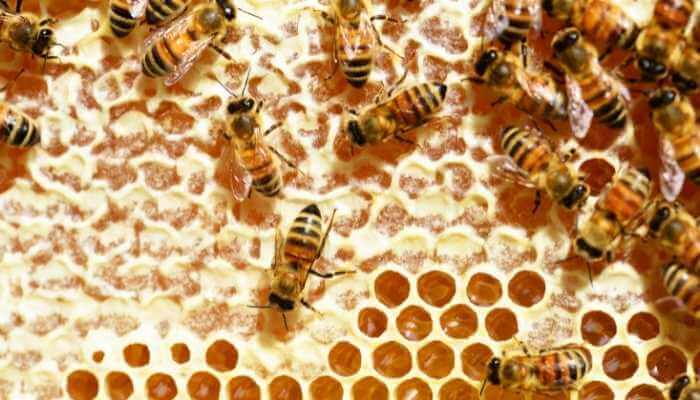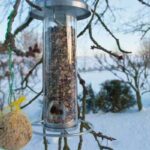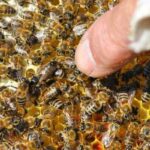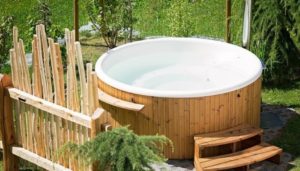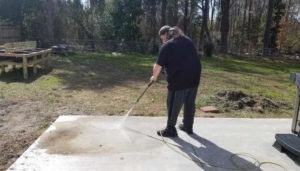Making a home for bees is a great thing to accomplish. These insects are in danger all over the world because of climate change and the use of pesticides. They are responsible for the continuation of most food crops because their drive to collect food means they pollinate crops. If you have a garden or flowers of any kind, bees can help keep them pollinated and producing. But can you have a beehive in your backyard?
Yes, most places in the world allow people to have backyard beehives. You simply need to follow your local regulations and guidelines.
What Safety Guidelines Should I Be Aware Of?
The Honey Bee Act of 1922 is the original guideline for beekeeping in the United States. It has been amended. You can read up on laws and regulations by simply going to your state beekeepers’ organizations and websites and looking them up. There are strict guidelines on how to handle, label, and package honey.
There are guidelines for actually having a hive in your backyard. If you have space, there are several things you may want to do. I know people with hives in their backyards and urban areas, even up on buildings. But, I say check to be sure.
“The North Carolina Honey Bee and Honey Act of 1977 authorizes the North Carolina Commissioner of Agriculture and the N.C. Board of Agriculture to promote, improve, and enhance the bee and honey industry in North Carolina, particularly relative to small beekeepers… This 1977 law also prohibits cities and counties from enforcing any ordinance or resolution that prohibits people from owning or operating five or fewer bee hives.”
But HOAs have taken residents to court to have beehives removed from their community. So be sure you won’t get any push-back once you decide to raise bees. People can be very petty and mean if they don’t get their way. I would hate to see a hive destroyed and an investment loss because of this.
Otherwise, make sure your bees are not aggressive and that you don’t have any pesky critters that might want to get too curious around a hive. Also, keep the hives away from where children may play. These are common sense things to be sure of, but they needed to be mentioned. If I put one up, I’ll be putting a fence around it to keep my big, sweet, but very dumb doggo away from it.
What Kind of Hive Should I Get for My Backyard?
You can order a starter and professional hives from many companies out there, including Amazon.com. Some are traditional, with very few differences between those made today versus those made 20 years ago. Other hives are an upgrade from these systems or even modernized.
Just be sure to look into what comes with the hives because many of them come with the parts for the main build of the box, or they come with the already put-together box, but then you have to buy frames separately. Of course, if you have the time and resources, you can build your own.
Though there is no “best kind of hive,” there are three common types of bee hives available with newer versions that have come around and are being sold for specialized locations. You decide what is best for you and your situation.
Langstroth
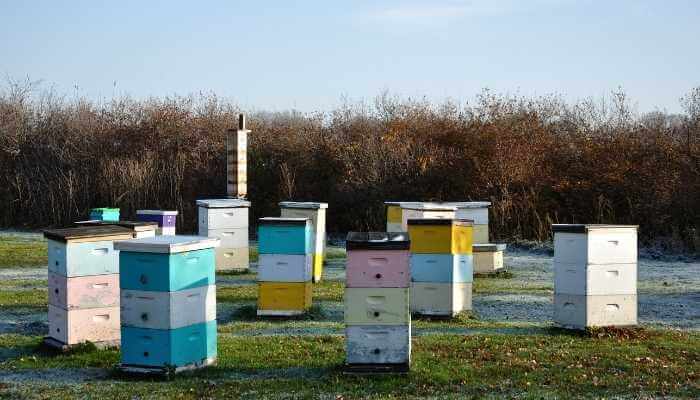
Most people envision this common beehive design when they think of a beehive. Named for its inventor, this is a modular, expandable box hive with moderately easy access. They have vertical frames for bees to fill with enough bee space between them to be comfortable.
You add new components to the top of the hive, which makes expanding easier. The dimensions are standard between manufacturers, so you can use components together, even if different companies made them.

Did You Know?
Reverend L.L. Langstroth invented this hive design in 1852. He came up with the notion of leaving “bee space,” which is enough of a gap between the frames that the bees do not fill with a comb. This makes the management of a hive much easier for the beekeeper. It’s also a design that has remained successful in all future beehive designs since.
Warre
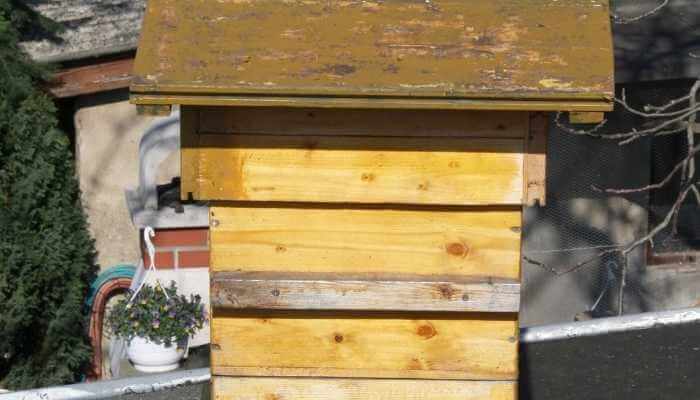
Named after the French monk that invented it, the Warre beehive is similar, though smaller than the Langstroth. He decided to create a space more similar to a natural setting. So the inside is set up more like a hollow tree. You can add new boxes to the bottom instead of the top. This can get heavy when those boxes are filled with an annoyed queen, bees, and their honey.
Instead of frames to guide the bees in the building, there are simply slats at the top. The bees will generally build downward vertically from those slats. The roof also has a purpose; to control the condensation made by the colony, especially during the winter.
Top Bar (TBH)

This is a more modern design that is made to be comfortable for the beekeeper. This is a perfect height for maintenance. It also has frames placed vertically, the top of those a bar that has a strip to encourage the bees to build their comb downward. It’s all encased in a long box. There is no expansion unless you purchase another entire hive to put close to the original and hope for the best, but this also makes it simple and great for beginners.
Nucleus Hives

Also known as a “nuc,” this is a box hive that is half the size of a standard hive. It usually comes with five frames of combs and a colony made up of workers, babies, honey, and a queen.
These hives are made for smaller spaces but also have a purpose in being designed smaller. The more compact size allows the bees to control the temperature and humidity inside the hive better, which is important for the welfare of the brood and the colony’s health.
Sometimes nucs can be left out or stacked as small hives unto themselves. However, they can also be placed onto full-sized hives and expanded into them. Because they are pre-established and ready to begin, when they are open to a springtime of great foraging, they can be very productive almost immediately.
Modern Models
I would honestly love to get my hands on a BeeHaus model. Others are similar in comparison, but for the price (I found them for £499), it comes with pretty much everything. I may have to wait till we move to Europe for that.
Modern models of the traditional and most used hives (Langstroth, Warre, and Top Bar) often come with viewing windows now so that the beekeeper can look into the hive without disturbing it as much. Some new designs combine the design of the Langstroth and Top Bar as well.
What if you don’t just want to help honey bees? You can find nests made for all kinds of bees, including red mason bees and leaf-cutter bees. Some are arts-and-crafts style and others are like birdhouses but made for bees. Manufacturers shape others into bricks that can actually be laid into a foundation. They provide shelter for bees to lay eggs in.
What Does Having a Backyard Hive Take?
Bees do best if their hive is situated against a treeline or fence. It needs to be sheltered if you can manage that. Bees travel miles in a day to collect their pollen, so if you have flowers in your yard, you’ve already helped them out.
Putting bees in a neighborhood is actually helpful in that they should have plenty of flowers to peruse – so long as people don’t put pesticides on them. Bees need their hive, sunlight, and water. They may also require you to help them out with some nourishment during sparse seasons of the year.
Hives are usually only a few feet square, so almost any backyard can handle a hive or two. A starter kit for a hive usually comes with workers, combs, honey, babies, and a productive queen. But if you ever have to introduce a new queen, I looked up information on that for you in this article: How Should You Introduce a New Queen to Your Hive?
Remember that you must be ready to provide time and maintenance to your bees. If you cannot handle the hive, it can easily be overcome by pests, collapse, or a good portion may swarm elsewhere.
Bee Breeds – Which Are Best to Try to Enjoy?
American Golden Italian Honeybee
The American Golden Italian Honeybee is a favorite among beekeeping enthusiasts, especially those who are just starting out. Why is this? Because they aren’t as prone to swarming, they are tolerant of illness and winter. They produce well and have a peaceful temperament. If an Italian bee colony wants to swarm, I’m told those are much easier to predict. The con? They don’t have the VSH trait and also may need to be fed in long winters – they eat a lot.

Boost Tip
An example of a trait that you may want in your honey bees is the VSH (Varroa Sensitive Hygiene) trait. This trait means they are less likely to succumb to varroa mites, which can take out entire colonies.
Russian Honeybee
The Russian Honeybee is another sought-after beginner’s breed. They are similar to the Italian Honeybee in disposition, but they are VSH trait carriers. What can be unusual for them and a downside to having them in a hive is that they usually keep a queen cell always prepared. When a beekeeper sees a queen cell prepared in most hives, it signifies that the current queen may swarm. But in this case, the Russian bees are just being cautious, always keeping a spare queen on hand.
Carniolan Honeybee
The Carniolan Honeybee is one of the mildest tempers out there. They are very active in Spring and will forage like crazy, filling hives for their beekeepers. Be ready to give them more space because they fill up a hive quickly and might swarm if they run out of room. Having originated in Europe, they also do very well in colder climates.
If you want a specific genetic predisposition added to a hive already in existence, you can replace the queen. This can also happen simply if the queen dies or you realize the queen isn’t producing. So long as the older queen is gone, a new queen can be introduced.
Remember – Mason Bees and Carpenter Bees are two species that do not make honey, but are important. These bee species are not social, but they are exceptional at pollination. Mason bees are especially good with fruit pollination. They deserve some space.
In Conclusion…
I hope you enjoyed the article and found it useful. If you want to learn more about your local bee laws and ordinances or gather information about how to begin your own journey into beekeeping, look for organizations that offer that information. They might be local farmers’ organizations, coops, or your local extension offices. I know we’ve found a wealth of information simply by talking to our local beekeepers that come to the farmer’s markets.
Sources:
https://www.ncbeekeepers.org/resources/laws
https://www.beekeeping-101.com/
https://growingsmallfarms.ces.ncsu.edu/growingsmallfarms-beekeeping/
https://cals.cornell.edu/pollinator-network/beekeeping/beekeeping-basics
